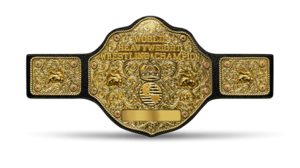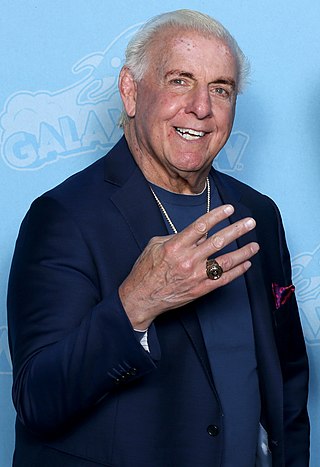
Richard Morgan Fliehr, known professionally as Ric Flair, is an American professional wrestler currently signed to All Elite Wrestling (AEW). Regarded by multiple peers and journalists as the greatest professional wrestler of all time, Flair has had a career spanning over 50 years in 6 decades.

Jim Crockett Promotions is a family-owned professional wrestling promotion headquartered in Charlotte, North Carolina, United States. Founded in 1931, the promotion emerged as a cornerstone of the National Wrestling Alliance (NWA). By the 1980s, Jim Crockett Promotions was, along with the World Wrestling Federation, one of the two largest promotions in the United States. The Crockett family sold a majority interest in the promotion to Turner Broadcasting System, which was acquired by Time Warner in 1996, resulting in the creation of World Championship Wrestling (WCW) in 1988. In 2022, Jim Crockett Promotions Inc. was restarted by Jim Crockett's son and Jim Crockett Jr's brother, David Crockett.

The NWA Worlds Heavyweight Championship is a men's professional wrestling world heavyweight championship owned and promoted by the National Wrestling Alliance (NWA), an American professional wrestling promotion. The current champion is EC3, who is in his first reign.

The WCW World Heavyweight Championship was a professional wrestling world heavyweight championship originally used in World Championship Wrestling (WCW) and later, the World Wrestling Federation. It was the original world title of the World Championship Wrestling promotion, spun off from the NWA World Heavyweight Championship. It existed in WCW from 1991 to 2001.
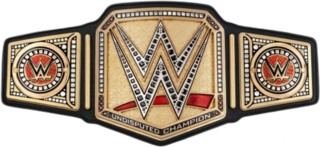
The WWE Championship is a men's professional wrestling world heavyweight championship created and promoted by the American promotion WWE, defended on the SmackDown brand division. Since April 2022, the title has been jointly held and defended with the WWE Universal Championship as the Undisputed WWE Universal Championship, but both titles have maintained their individual lineages. It is one of three world titles in WWE, alongside its companion Universal Championship on SmackDown, and the World Heavyweight Championship on Raw. The current champion is Cody Rhodes, who is in his first reign. He won the undisputed title by defeating previous champion Roman Reigns in a Bloodline Rules match at WrestleMania XL Night 2 on April 7, 2024.

Richard Henry Blood Sr., better known by his ring name Ricky "the Dragon" Steamboat, is an American retired professional wrestler best known for his work with the American Wrestling Association (AWA), Jim Crockett Promotions (JCP), World Championship Wrestling (WCW), and the World Wrestling Federation. Steamboat is often regarded as one of the best professional wrestlers of all time.

The World Heavyweight Championship was a men's professional wrestling world heavyweight championship created and promoted by the American promotion WWE. It was the second world championship to be created by the company, after their original world title, the WWE Championship (1963). The title was one of two top championships in the company from 2002 to 2006 and from 2010 to 2013, complementing the WWE Championship, and one of three top championships from 2006 to 2010 with the addition of the ECW World Heavyweight Championship.

The WWE United States Championship is a men's professional wrestling championship promoted by the American promotion WWE, defended on the SmackDown brand division. It is one of two secondary championships for WWE's main roster, along with the WWE Intercontinental Championship on Raw. The current champion is Logan Paul, who is in his first reign. He won the title by defeating Rey Mysterio at Crown Jewel on November 4, 2023.

The WCW International World Heavyweight Championship was a professional wrestling world heavyweight championship that was contested in World Championship Wrestling (WCW) between 1993 and 1994. Although it was owned and controlled by WCW, the championship was presented as the highest accolade of "WCW International", a fictitious subsidiary. The championship was contested at WCW events and at several events in Japan under the aegis of New Japan Pro-Wrestling (NJPW).

Virgil Riley Runnels Jr., better known as "The American Dream" Dusty Rhodes, was an American professional wrestler, booker, and trainer who worked for the National Wrestling Alliance and the World Wrestling Federation, later known as WWE. Rhodes was considered a star wrestler and presented the persona of an American everyman, the American Dream personified. Rhodes is widely regarded as one of the greatest professional wrestlers of all time.
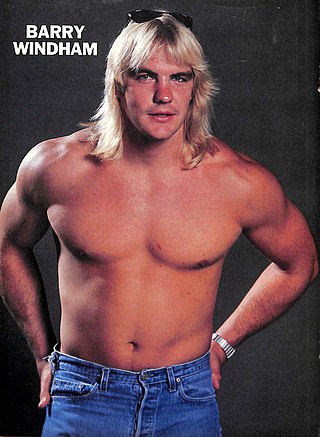
Barry Clinton Windham is an American retired professional wrestler. The son of wrestler Blackjack Mulligan, he is best known for his appearances with the National Wrestling Alliance (NWA) and World Championship Wrestling (WCW).
Championship unification is the act of combining two or more separate professional wrestling championships into a single title.

Tatsumi Fujinami is a Japanese professional wrestler currently signed to WWE on a legend's contract. Fujinami is most well known for his long tenure with New Japan Pro-Wrestling (NJPW), where he was a six-time IWGP Heavyweight Champion. He was famously nicknamed "The Dragon", and is credited for inventing the dragon sleeper and the dragon suplex.
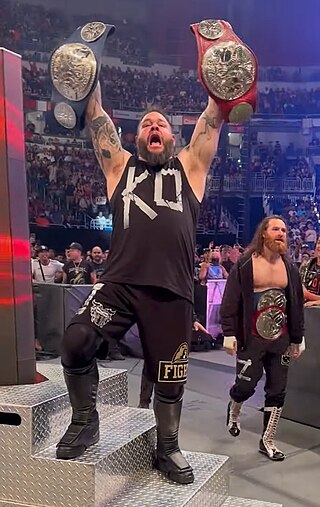
An undisputed championship is a professional wrestling term for a world title that is the unquestioned top championship in a promotion, often formed from two world titles being unified or held by the same individual.

The Great American Bash is a professional wrestling event currently produced by WWE, a professional wrestling promotion based in Connecticut. Created by Dusty Rhodes, the event was established in 1985 and was originally produced by the National Wrestling Alliance's (NWA) Jim Crockett Promotions (JCP). In 1988, it began broadcasting on pay-per-view (PPV), and later that same year, JCP was rebranded as World Championship Wrestling (WCW), which seceded from the NWA in January 1991.

World Championship Wrestling (WCW) was an American professional wrestling promotion that existed from 1988 to 2001. It began as a promotion affiliated with the National Wrestling Alliance (NWA) that appeared on the national scene under the ownership of media mogul Ted Turner and based in Atlanta, Georgia. Prior to the launch of WCW as a separate promotion, the "World Championship Wrestling" name was used for a television program produced by NWA promotions Georgia Championship Wrestling and Jim Crockett Promotions on TBS; the name came from an Australian wrestling promotion of the 1970s.
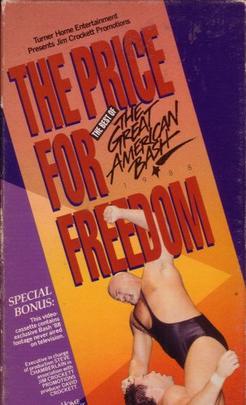
The 1988 Great American Bash was the fourth annual Great American Bash professional wrestling event produced by the National Wrestling Alliance's (NWA) Jim Crockett Promotions (JCP). It was the first Great American Bash event to air on pay-per-view (PPV), as the previous events aired on closed-circuit television. The event took place on July 10, 1988, at the Baltimore Arena in Baltimore, Maryland. This was the final NWA event produced by JCP and the third and final NWA event to be produced as a pay-per-view, as JCP was purchased by Turner Broadcasting System in November 1988 and was rebranded as World Championship Wrestling (WCW). This was also the first Pay Per View produced under the Turner Home Entertainment banner as the other two events were produced by The Wrestling Network.

The World Heavyweight Wrestling Championship was the first recognized professional wrestling world heavyweight championship created in 1905 to identify the best catch as catch can wrestler in the world.
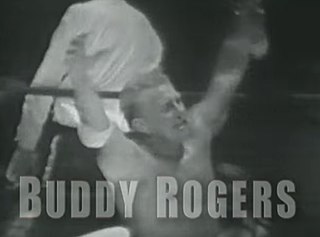
The American professional wrestling promotion WWE has maintained several men's world championships since Capitol Wrestling Corporation seceded from the National Wrestling Alliance in 1963 to become the World Wide Wrestling Federation (WWWF), which was later subjected to various name changes, including World Wrestling Federation (WWF) and World Wrestling Entertainment (WWE)—in April 2011, the company ceased using its full name and has since just been referred to as WWE. The company's first world championship was the WWE Championship, which was established along with the promotion's creation in 1963 as the WWWF World Heavyweight Championship; it is still active today and is WWE's oldest active title. Whenever the WWE brand extension has been implemented, separate world championships have been created or allocated for each brand.
